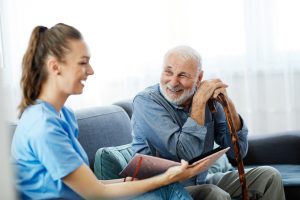1. Secure your email, social media and apps
Put strong security on important accounts where you exchange personal or sensitive information such as email, bank and social media accounts.

- Turn on two-factor authentication, such as a code sent to your mobile, for an extra layer of security.
- Use strong passwords on your accounts. A strong password is a passphrase of at least 13 characters, made up of about four words that are meaningful for you but not easy for others to guess. For example, ‘horsecupstarshoe’.
- Don’t use the same password on any of your accounts.
- Consider using a reputable password manager.
Visit the Have I Been Pwned website to see if your email has been breached. If your email has been breached you need to change your password immediately. Make sure you haven’t used the breached password on any other accounts.
Check out Google’s Advanced Protection program for people at risk of targeted attacks.
2. Watch out for scam messages
Online scams and ‘phishing’ by email, SMS, social media posts and direct messaging are designed to steal your logins, credentials and personal details or to download malicious software onto your devices.

- Check before you click links – hover over the link to see the actual web address.
- Never enter your username or password from links in messages to your accounts – go to the official website or app.
- If a message seems suspicious, contact the person/business through a separate, legitimate source to confirm it.
For more information about online scams, visit the Australian Cyber Security Centre’s Stay Smart Online website
3. Secure your mobile and computer

- Always use a PIN or password on your mobile and computer.
- Always do the software updates such as Microsoft, iOS and Android.
- Make sure you download apps from official stores such as the Apple App Store or Google Play for Android.
- Install security software on your devices to protect you from malicious software.
4. Check public Wi-Fi before connecting
Information shared through public Wi-Fi hotspots in cafés, airports, hotels and other public places can be intercepted.

- Turn off automatic connection to public Wi-Fi on your devices.
- Choose to connect to non-public Wi-Fi for a more secure connection.
- Consider installing a reputable Virtual Private Network (VPN) solution on your device.
Checklist
Follow the checklist to protect yourself from scammers, cybercrime and identity theft.
Help
Contact the Australian Cyber Security Centre by email or call the 24/7 Hotline for urgent assistance on 1300 CYBER1 (1300 292 371)
Report cybercrime to ReportCyber
Report scams to Scamwatch at scamwatch.gov.au
Contact IDCARE if you’ve experienced identity theft at idcare.org
Visit the Australian Cyber Security Centre’s Stay Smart Online website for advice for you and your family. Sign up for the free Stay Smart Online alert service on recent online threats.
This information was originally featured here.
Important:
This article was produced by Australian Cyber Security Centre. This is a link to the original article.
This provides general information and hasn’t taken your circumstances into account. It’s important to consider your particular circumstances before deciding what’s right for you. Any information provided by the author detailed above is separate and external to our business and our Licensee. Any information provided by the author detailed above is separate and external to our business and our Licensee. Neither our business, nor our Licensee take any responsibility for any action or any service provided by the author.
Any links have been provided with permission for information purposes only and will take you to external websites, which are not connected to our company in any way. Note: Our company does not endorse and is not responsible for the accuracy of the contents/information contained within the linked site(s) accessible from this page.







